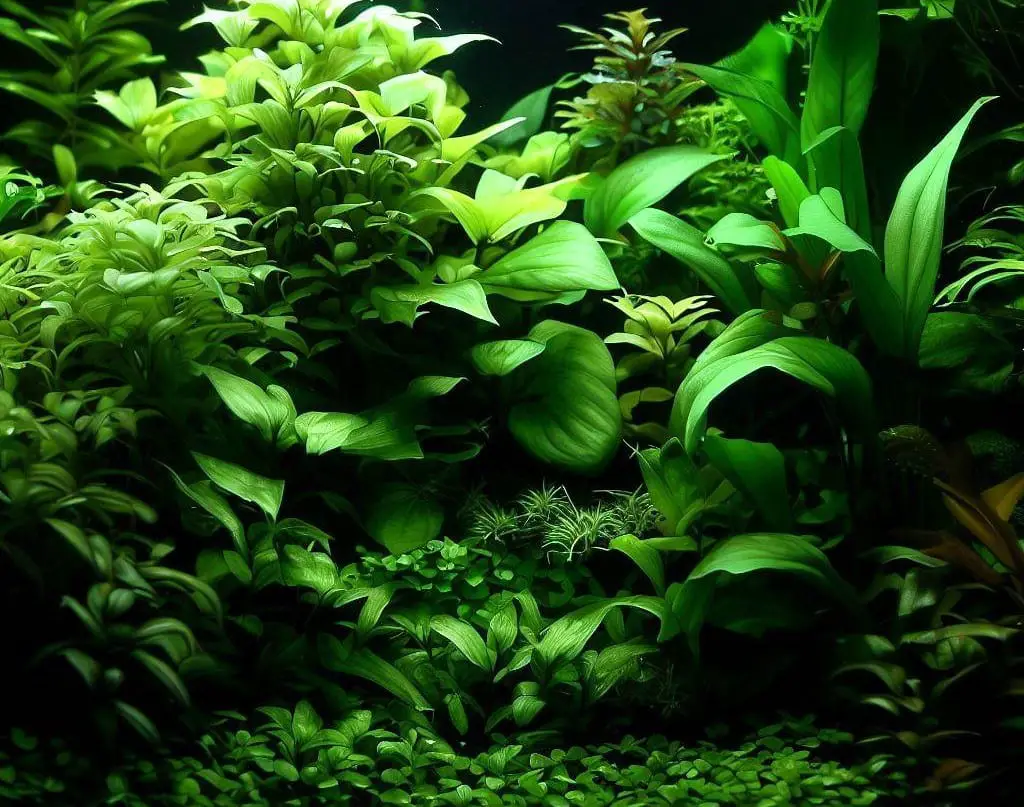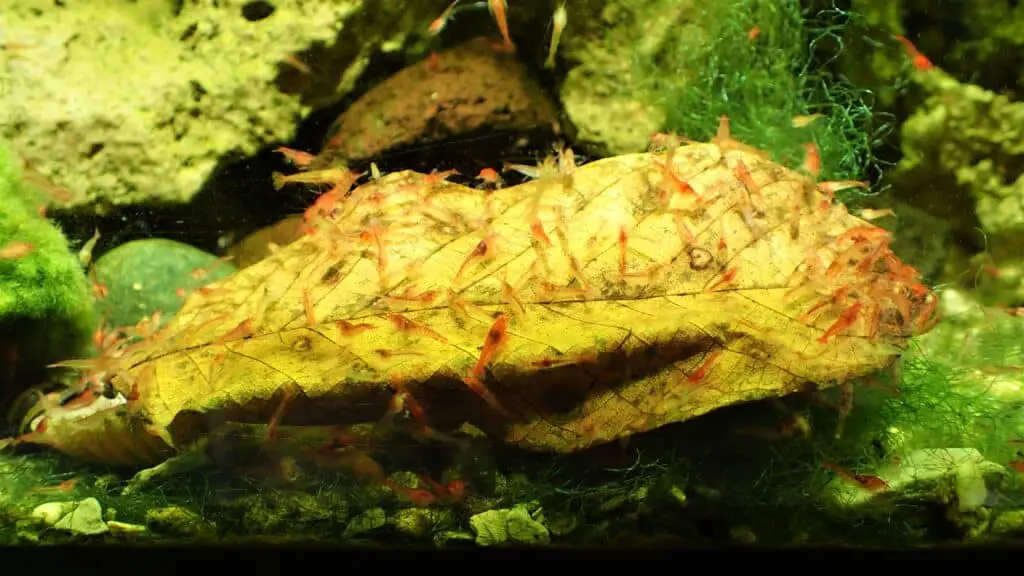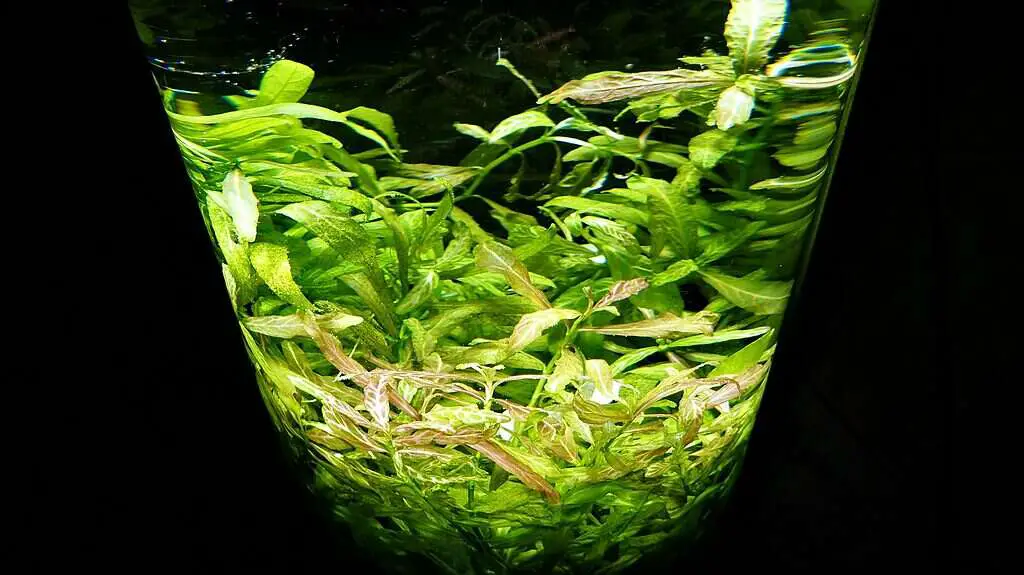Do I need a filter in my shrimp tank? Yes, you need a filter in your shrimp tank to maintain a healthy environment for your shrimp. Filters help remove waste materials, debris, and toxins from the water, which can accumulate quickly in a closed ecosystem like an aquarium.
Additionally, filters promote the growth of beneficial bacteria, which are essential for breaking down harmful chemicals like ammonia and nitrite.
When selecting a filter for your shrimp tank, it’s important to choose one with a low flow rate to avoid disturbing the shrimp and to consider using a sponge filter that is gentle and promotes the growth of beneficial bacteria.

When you should have a filter in your freshwater shrimp tank
While it’s true that heavily planted shrimp tanks can often thrive without a filter, there are certain circumstances where a filter may still be necessary. For example, if your goal is to mass breed shrimp, a filter may be essential to maintaining water quality and ensuring that the shrimp have a healthy environment in which to reproduce.
Additionally, some species of shrimp are more delicate than others and may benefit from the additional water circulation provided by a filter. Shrimp that require cooler water temperatures, such as Crystal Red Shrimp, may also need a filter to maintain consistent water conditions.
Ultimately, whether or not you need a filter in your shrimp tank will depend on a variety of factors, including the size of the tank, the number and species of shrimp you keep, and your personal preferences as an aquarist. It’s important to consider all of these factors when deciding whether or not to use a filter in your shrimp tank.
The Walstad Method
The Walstad Method, also known as the Natural Planted Tank Method, is a popular aquarium setup that relies on a balance of fish, plants, and bacteria to maintain water quality without the use of a traditional filter.
The method was developed by aquatic biologist Diana Walstad and has gained a large following among aquarists who prefer a more natural approach to aquarium keeping.
The Walstad Method involves setting up a heavily planted aquarium with a nutrient-rich substrate, such as soil or dirt, and a layer of sand or gravel on top.
The plants in the tank absorb waste products and carbon dioxide produced by fish, while bacteria in the soil break down organic matter and convert it into nutrients that the plants can use.
The plants in a Walstad tank act as a natural filter, absorbing excess nutrients and producing oxygen for the fish. Because the tank is heavily planted, there is very little room for algae to grow, and the plants are able to outcompete algae for nutrients.
The Walstad Method is often used for low-tech, low-maintenance aquarium setups, and is a popular choice for shrimp tanks. However, it’s important to note that the Walstad Method does require careful monitoring of water parameters, especially during the initial setup phase, as the tank establishes its own unique balance of plants, bacteria, and fish.
Overall, the Walstad Method is a great option for aquarists looking for a more natural, self-sustaining aquarium setup, and can be a great way to keep a healthy and thriving shrimp tank without the need for a traditional filter.
Plants I would recommend in a no-filter aquarium
When setting up a no-filter aquarium, it’s important to choose the right type of plants that can thrive in this type of environment. Here are ten plant options that are suitable for no-filter aquariums:
- Anubias: Anubias are hardy and slow-growing plants that are great for no-filter aquariums. They can grow in low to medium lighting conditions and don’t require much maintenance. Anubias can also grow attached to rocks or driftwood, making them a great option for aquascaping.
- Java Fern: Java Fern is a popular choice for no-filter aquariums due to its hardiness and ease of care. It can grow in low light conditions and absorb excess nutrients, making it ideal for this type of environment.
- Water Sprite: Water Sprite is a fast-growing plant that can help to maintain water quality in a no-filter aquarium by absorbing excess nutrients. It can grow in a range of lighting and water conditions and can provide cover and food for small fish and shrimp.
- Cryptocoryne: Cryptocoryne is a low-maintenance plant that can grow in a range of lighting and water conditions. It can absorb excess nutrients and provides a natural look to your aquarium.
- Amazon Sword: Amazon Sword is a hardy and popular plant that can grow in a no-filter aquarium. It requires moderate lighting and can absorb excess nutrients, making it a good choice for this type of setup.
- Hornwort: Hornwort is a fast-growing plant that can help to maintain water quality in a no-filter aquarium by absorbing excess nutrients. It can grow in a range of lighting and water conditions and can provide cover and food for small fish and shrimp.
- Dwarf Sagittaria: Dwarf Sagittaria is a low-maintenance plant that can grow in a range of lighting and water conditions. It can absorb excess nutrients and provides a natural look to your aquarium.
- Java Moss
 : Java Moss is a hardy and popular plant that can grow in low light conditions. It can provide shelter and food for small fish and shrimp and helps to maintain water quality in a no-filter aquarium.
: Java Moss is a hardy and popular plant that can grow in low light conditions. It can provide shelter and food for small fish and shrimp and helps to maintain water quality in a no-filter aquarium. - Vallisneria: Vallisneria is a fast-growing plant that can absorb excess nutrients in a no-filter aquarium. It can grow in low to moderate lighting conditions and provides a natural look to your aquarium.
- Salvinia: Salvinia is a floating plant that can help to maintain water quality in a no-filter aquarium. It can absorb excess nutrients and provides cover and shade for small fish and shrimp.
By selecting hardy and adaptable plants like those listed above, you can create a thriving no-filter aquarium that is easy to maintain. Remember to choose plants that can thrive in low light and low nutrient environments since there won’t be a filter to remove excess waste and nutrients.
Shrimp species that are suitable for a no-filter aquarium
| Shrimp Species | Water Type | Water Parameters | Temperature | pH | Care Level |
|---|---|---|---|---|---|
| Red Cherry Shrimp | Freshwater | pH 6.5-8.0 | 68-78°F (20-26°C) | 6.5-8.0 | Easy |
| Amano Shrimp | Freshwater | pH 6.0-7.5 | 72-78°F (22-26°C) | 6.0-7.5 | Moderate |
| Ghost Shrimp | Freshwater | pH 7.0-8.0 | 72-82°F (22-28°C) | 7.0-8.0 | Easy |
| Opae Ula | Brackish | pH 7.5-8.5 | 72-78°F (22-26°C) | 7.5-8.5 | Easy |
| Triops | Freshwater or Rainwater | pH 7.0-8.0 | 75-82°F (24-28°C) | 7.0-8.0 | Moderate |
Opae Ula (Hawaiian red shrimp) and Triops are two additional species that are suitable for a no-filter aquarium. Opae Ula are a hardy species that are adapted to living in volcanic brackish pools and can tolerate a wide range of water conditions. Triops are also hardy and can tolerate fluctuating water conditions. It’s important to note that Triops have a shorter lifespan than most aquarium shrimp, and they are not recommended to be kept with smaller fish or invertebrates as they may prey on them.
Remember to provide a suitable habitat and food for these shrimp species, and perform regular water changes to maintain water quality in the aquarium.
Triops and their suitability for non-filtered aquariums
Triops are a type of ancient crustacean that are popular among hobbyists for their unique appearance and interesting behaviors. Unlike many other types of aquatic animals, Triops can thrive in an aquarium that does not have a traditional filter.
Triops are able to survive in non-filtered aquariums because they have a relatively low bioload, which means they produce less waste than other types of aquatic animals. Additionally, Triops are hardy creatures that are able to tolerate a wide range of water conditions, including fluctuations in temperature and pH.
In fact, some Triops enthusiasts believe that non-filtered aquariums are actually better for these creatures than traditional filtered tanks. This is because the absence of a filter allows for more natural water flow, which can stimulate Triops to exhibit their natural behaviors, such as digging and burrowing in the substrate.
That being said, it’s still important to maintain water quality in a non-filtered Triops aquarium. This can be done by performing regular water changes and removing any uneaten food or debris from the tank.
Overall, if you’re interested in keeping Triops, a non-filtered aquarium may be a good choice. However, as with any aquarium setup, it’s important to research and understand the unique requirements of these creatures in order to ensure their health and well-being.

Opae Ula shrimp and their suitability for non-filtered aquariums
Opae Ula, also known as Hawaiian red shrimp, are a popular species of shrimp among aquarists. These tiny, colorful creatures are well-suited to living in a non-filtered aquarium, and many enthusiasts choose not to use a filter in their Opae Ula tanks.
One of the main reasons that Opae Ula can thrive without a filter is because they have a very low bioload. This means that they produce very little waste, and the natural balance of bacteria, plants, and other organisms in the tank is able to keep the water clean and healthy for the shrimp.
In addition to their low bioload, Opae Ula are able to tolerate a wide range of water conditions, including variations in temperature and salinity. This makes them well-suited to living in a simple, low-maintenance aquarium setup without a filter.
Fish and shrimp that live in rockpools are typically known for their hardiness and ability to survive in challenging environments. One of the main reasons for this is that rockpools have naturally fluctuating water conditions, with changes in temperature, salinity, and oxygen levels.
This means that the organisms that live in rockpools have adapted to tolerate these fluctuations and are more resilient to changes in their environment.
Many Opae Ula enthusiasts prefer not to use a filter in their tanks because it can disrupt the delicate balance of the ecosystem. Instead, they rely on the natural processes of the tank, such as the growth of microalgae and bacteria, to keep the water clean and healthy for the shrimp.
Additionally, adding live plants or other natural filtration methods, such as a sponge filter or a small air pump, can help to promote a healthy ecosystem for these fascinating creatures.
Overall, Opae Ula are a great choice for aquarists looking for a low-maintenance, self-sustaining aquarium setup, and many enthusiasts have found success keeping these beautiful shrimp in tanks without a traditional filter.
Conclusion on Do I need a filter in my shrimp tank?
When it comes to whether or not a filter is necessary in an aquarium, there is no one-size-fits-all answer. The decision to use a filter will depend on a variety of factors, including the size and type of tank, the species of animals being kept, and the aquarist’s personal preferences.
As we have seen, some types of aquarium setups, such as heavily planted tanks or natural planted tanks using the Walstad Method, may be able to thrive without a traditional filter. Similarly, some species of aquatic animals, such as Opae Ula and Triops, are able to tolerate a non-filtered aquarium environment.
However, it’s important to note that for other types of aquariums and animal species, a filter may be essential for maintaining good water quality and promoting a healthy environment. For example, if an aquarist is looking to mass breed shrimp or keep delicate species of fish, a filter may be necessary to provide adequate water circulation and remove excess waste products.
Ultimately, the decision to use a filter in an aquarium will depend on the unique needs of the animal species being kept, as well as the specific characteristics of the aquarium setup. That’s why it’s so crucial for aquarists to conduct thorough research before setting up an aquarium and to carefully consider the needs of the animals they plan to keep.
By taking the time to understand the unique requirements of different types of aquariums and animal species, and by carefully monitoring water quality and making adjustments as needed, aquarists can create thriving, healthy aquarium environments that are a joy to behold.
FAQ
Q: Can shrimp live with no filter? A: Yes shrimp can live in a tank with no filter as long as you provide them with lots of plants, if your goal is to breed lots of shrimp add a filter.
Q: Why is a filter important for a shrimp aquarium? A: A filter is important for a shrimp aquarium as it helps to maintain water quality by removing debris and waste, and providing a surface for beneficial bacteria to grow.
Q: What are the risks of not using a filter in a shrimp aquarium? A: Not using a filter in a shrimp aquarium can lead to poor water quality, which can cause health problems and even death for your shrimp. It can also lead to an accumulation of waste and debris in the tank, which can harm the overall ecosystem.
Q: Can I use an air stone instead of a filter in my shrimp aquarium? A: An air stone can provide some aeration and water movement in a shrimp aquarium, but it is not a substitute for a filter. A filter is still necessary to maintain proper water quality.
Q: What kind of filter is best for a shrimp aquarium? A: The best kind of filter for a shrimp aquarium is a gentle, low-flow filter that does not create too much water movement or suction. A sponge filter or hang-on-back filter with adjustable flow rate is a good choice.
or hang-on-back filter with adjustable flow rate is a good choice.
Q: Can I use a small filter for a small shrimp tank? A: Yes, a small filter can be used for a small shrimp tank, but it is important to choose a filter with a low flow rate and gentle water movement. A sponge filter or hang-on-back filter with adjustable flow rate is a good choice.
or hang-on-back filter with adjustable flow rate is a good choice.
Q: Can I use a filter for a shrimp-only tank? A: Yes, a filter is recommended for a shrimp-only tank as it helps to maintain proper water quality and provide a healthy environment for your shrimp.
Q: Can I remove the filter from my shrimp tank temporarily? A: It is not recommended to remove the filter from your shrimp tank temporarily, as this can cause a rapid decline in water quality and harm your shrimp. If you need to clean or replace the filter, it is recommended to do so while maintaining a temporary filter or air stone to maintain water quality.
Q: Can I use live plants instead of a filter in my shrimp aquarium? A: Live plants can help to maintain water quality by absorbing excess nutrients and providing oxygen.
Q: Can I use a bare-bottom tank for my shrimp? A: Yes, a bare-bottom tank can be used for shrimp, but it may not provide as natural of an environment as a tank with gravel or sand. If you choose to use a bare-bottom tank, it is important to provide other natural filtration methods such as live plants or a filter.

